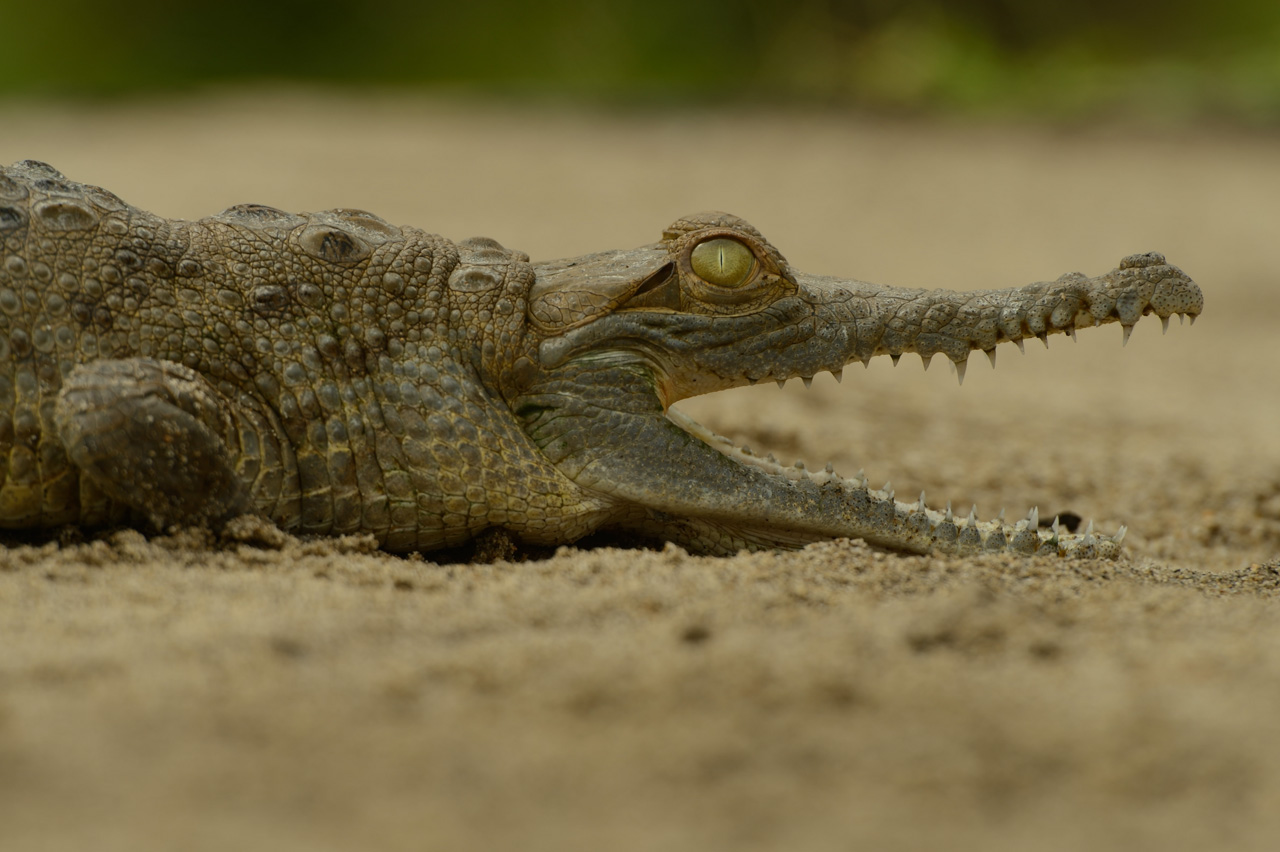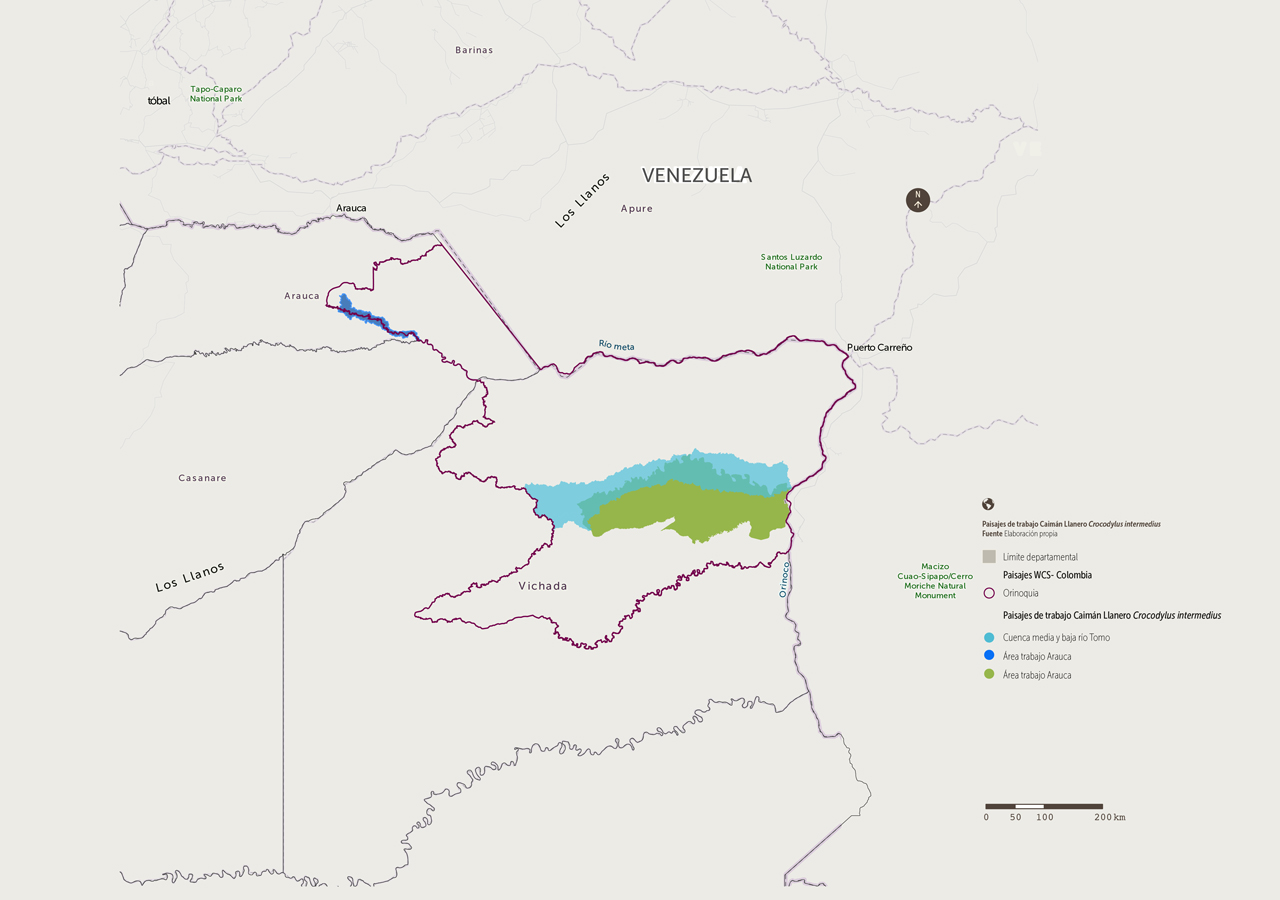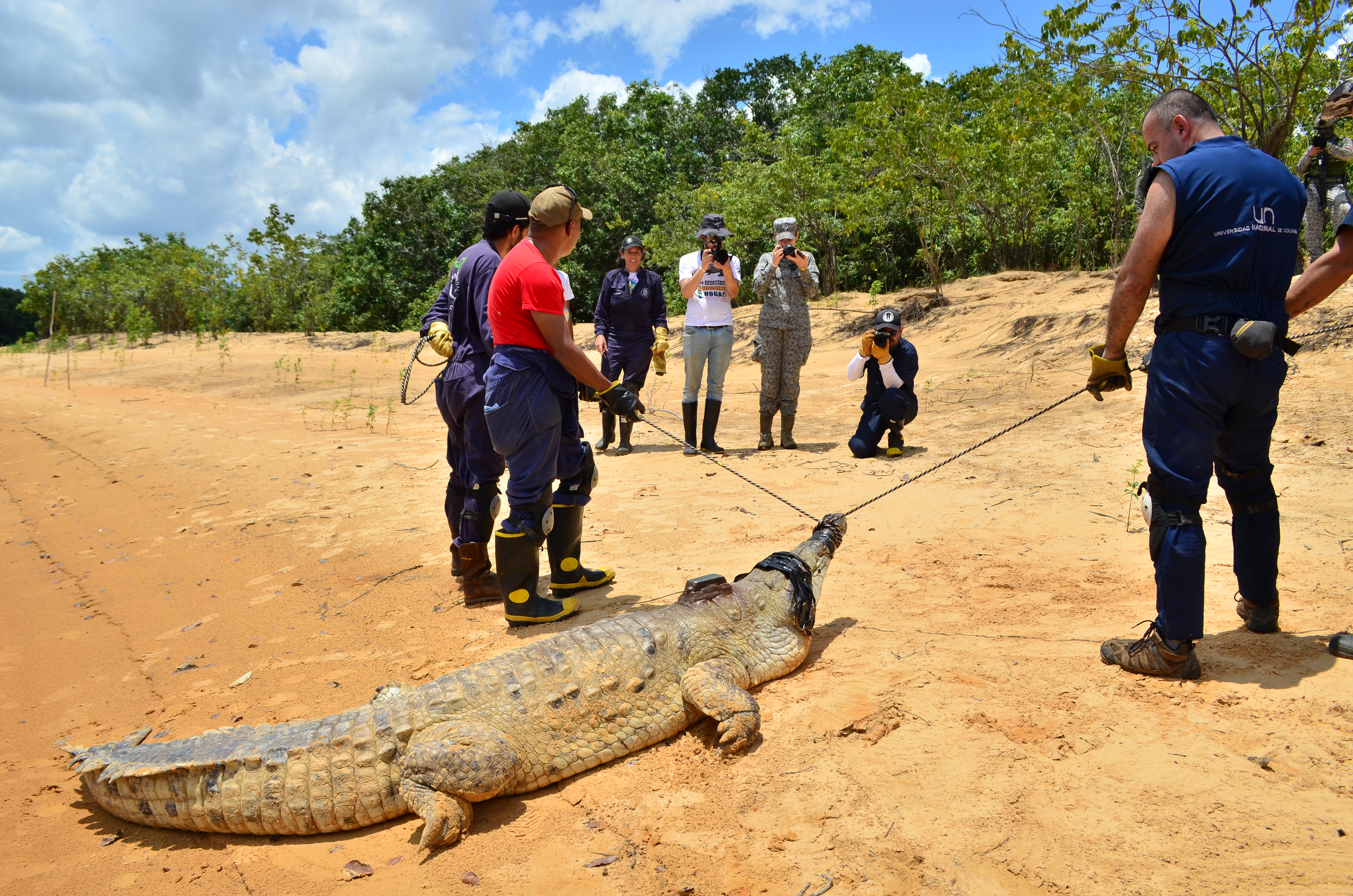Crocodylus intermedius
The Orinoco crocodile, also known as the Llanos caiman, is a reptile species from the Crocodylidae family. This crocodile is one of the largest predators in South America, reaching lengths of up to 6 meters, although average individuals typically measure between 3 and 5 meters. Its skin ranges from olive to light gray, with a lighter underside, and it features a series of longitudinal bony ridges along its back and tail. It has jaws equipped with numerous sharp teeth, enabling it to catch and hold onto its prey.
It plays a crucial role as an apex predator in its ecosystem. Its diet is diverse, including fish, birds, mammals, and other reptiles, helping maintain the balance of these species' populations and, consequently, the overall health of the ecosystem.
 Photo: "EL PATO" Salcedo / WCS Colombia
Photo: "EL PATO" Salcedo / WCS Colombia
By hunting and consuming sick or weak animals, caimans also help prevent the spread of diseases. Additionally, their movements and nesting activities influence the structure and dynamics of aquatic habitats, benefiting other species of flora and fauna.
Regarding ecological aspects, the species is territorial and solitary, although more social behaviors can be observed during the mating season. Reproduction occurs during the dry season, when females build nests on sandy beaches or earthen banks near water. They lay between 30 and 70 eggs, which incubate for about 70 to 90 days. The nest temperature determines the sex of the hatchlings (higher temperatures produce males and lower temperatures produce females). These hatchlings are cared for by the mother for some time after hatching.
It is almost extinct
The distribution of the Orinoco crocodile is mainly limited to the Orinoco River basin in Venezuela and Colombia. It inhabits various aquatic environments, including rivers, lakes, swamps, and flooded savannas. However, due to excessive hunting for its skin and habitat loss, its population has drastically declined, and its distribution has become fragmented.

The Orinoco crocodile is classified as Critically Endangered (CR) according to the International Union for Conservation of Nature (IUCN). This designation indicates that the species faces an extremely high risk of extinction in the wild due to factors such as excessive hunting and habitat loss.
In Colombia, its main threats have been illegal hunting, primarily for its skin and meat, as well as habitat destruction due to human activities like agriculture, livestock farming, and infrastructure development. The fragmentation of natural habitats and the reduction of available nesting areas have worsened the situation.
We repopulate with new individuals
WCS has been working to protect this reptile since 2014, supporting the breeding of individuals in captivity to repopulate areas from which the species had been extirpated.
Additionally, it is one of the flagship species of the Proyecto Vida Silvestre (PVS), a program supported by the scientific research conducted by the Palmarito Foundation from the Wisirare Biopark, located in Orucué (Casanare).
Through the PVS, the release of 80 juvenile and adult individuals into the Orinoco River basin has also been promoted, specifically in El Tuparro National Natural Park, where the species historically inhabited the Tomo River.

More than 500 individuals of the species have been bred and maintained, and over 80 individuals have been released. We are currently conducting monitoring efforts to assess the survival of these individuals and determine the success of the population's reestablishment.
Translated with AI support